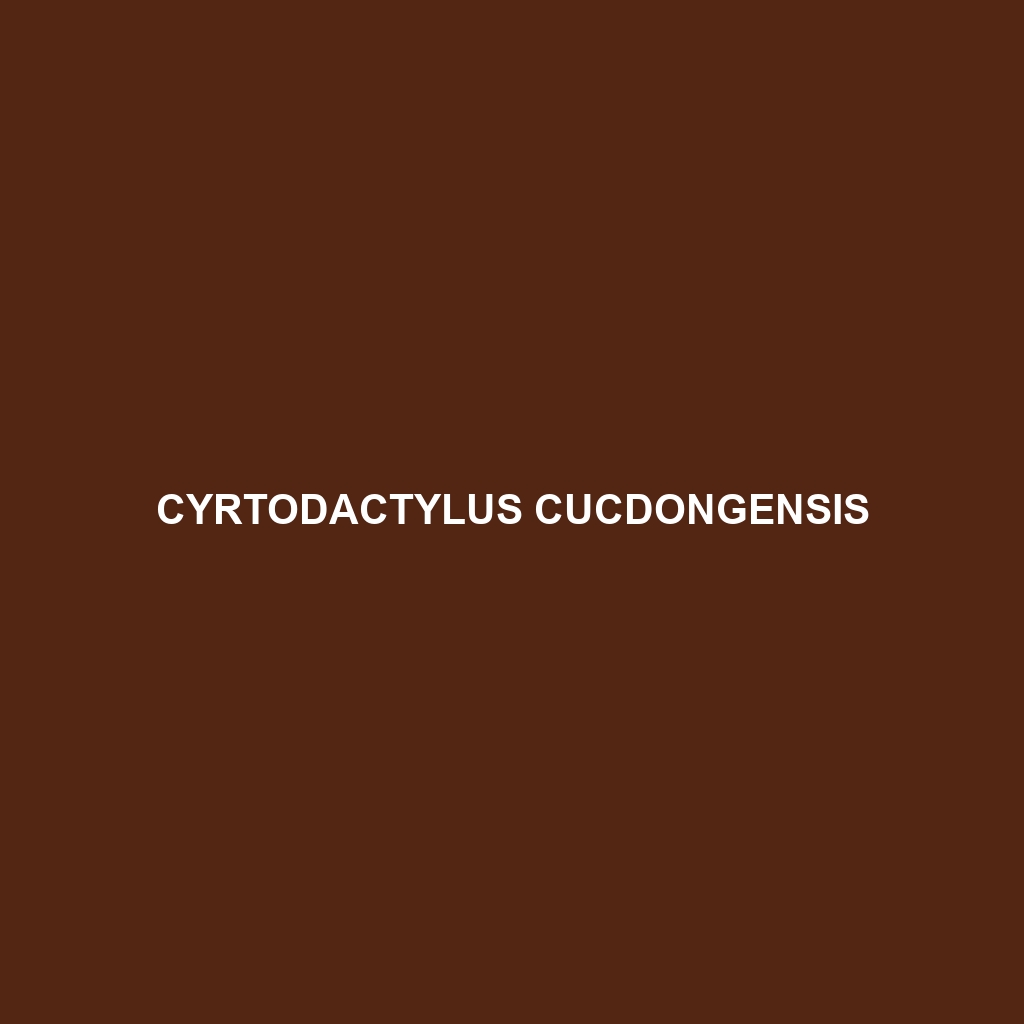Cyrtodactylus cucdongensis
Common Name: Cyrtodactylus cucdongensis
Scientific Name: Cyrtodactylus cucdongensis
Habitat
Cyrtodactylus cucdongensis, commonly known as the Cuc Dong bent-toed gecko, is primarily found in the mountainous regions of northern Vietnam. This species thrives in humid tropical forests, often residing in limestone karst formations and rocky outcrops where they can find ample shelter and hunting grounds. The specific geographic locations include the Cuc Phuong National Park and adjacent areas, which provide the moist environment necessary for their survival.
Physical Characteristics
Cyrtodactylus cucdongensis typically measures between 10 to 15 cm in length. This gecko is characterized by its robust body and distinctive bent toes, which adapt well for climbing and navigating rocky surfaces. The coloration is generally a mix of earthy browns and grays, with dark bands running along the body providing effective camouflage against predators. Notably, its large eyes and flat head enhance its visual acuity, allowing it to spot prey efficiently.
Behavior
Cyrtodactylus cucdongensis is primarily nocturnal, displaying increased activity at night when foraging for food. These geckos are known for their agility and ability to dart quickly across surfaces. They exhibit a variety of vocalizations, particularly during mating periods, and engage in territorial displays to ward off potential rivals. Their behavior is highly adapted to their rocky habitat which facilitates defense against predators.
Diet
The diet of Cyrtodactylus cucdongensis mainly consists of insects and other small arthropods, making them insectivores. Common food sources include crickets, beetles, and moths, which they hunt primarily at night. Their diet plays a critical role in maintaining the ecological balance, as they help control insect populations in their habitat.
Reproduction
Cyrtodactylus cucdongensis typically breeds during the warmer months, with peak activity observed in late spring. Females are known to lay two eggs at a time, usually in hidden crevices within their rocky environments. The incubation period lasts around 60 days before hatchlings emerge, showcasing independent behavior right from the start.
Conservation Status
Currently, Cyrtodactylus cucdongensis is classified as Vulnerable according to the International Union for Conservation of Nature (IUCN). Habitat loss due to deforestation and human encroachment poses significant threats to this species, underscoring the need for conservation efforts to protect its natural environment.
Interesting Facts
– The Cuc Dong bent-toed gecko is distinguished by its unique ability to blend seamlessly with its rocky surroundings, making it difficult for predators to spot.
– This species is relatively new to science, having been described only in recent years, which adds to its intrigue and the importance of ongoing research.
Role in Ecosystem
Cyrtodactylus cucdongensis plays a vital role in its ecosystem as both predator and prey. By maintaining insect populations, it supports the health of its habitat. Additionally, it serves as a food source for larger predators, highlighting its integral part in the food web. Protecting this species is crucial for sustaining biodiversity in its native regions.
